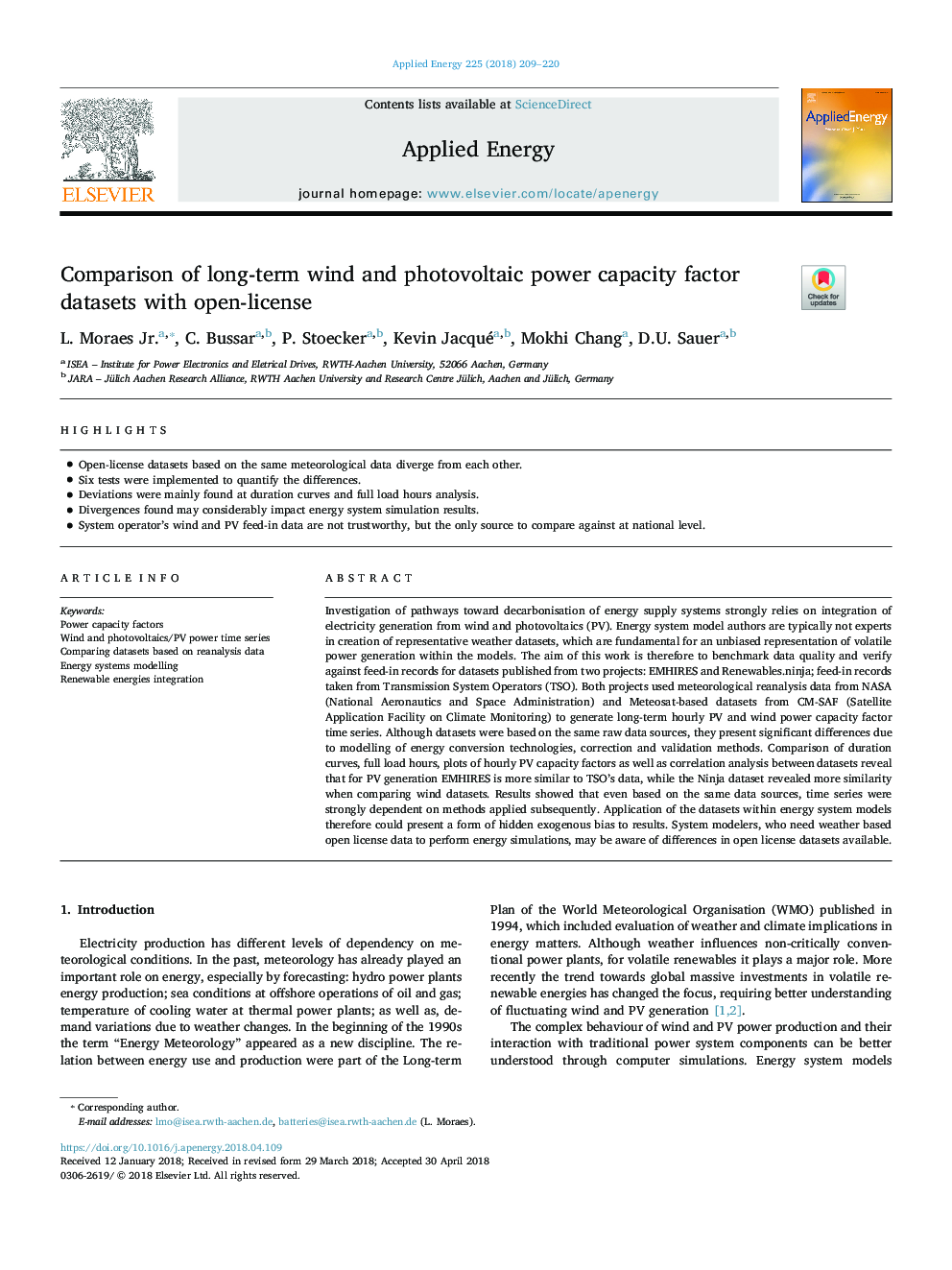| Article ID | Journal | Published Year | Pages | File Type |
|---|---|---|---|---|
| 6679905 | Applied Energy | 2018 | 12 Pages |
Abstract
Investigation of pathways toward decarbonisation of energy supply systems strongly relies on integration of electricity generation from wind and photovoltaics (PV). Energy system model authors are typically not experts in creation of representative weather datasets, which are fundamental for an unbiased representation of volatile power generation within the models. The aim of this work is therefore to benchmark data quality and verify against feed-in records for datasets published from two projects: EMHIRES and Renewables.ninja; feed-in records taken from Transmission System Operators (TSO). Both projects used meteorological reanalysis data from NASA (National Aeronautics and Space Administration) and Meteosat-based datasets from CM-SAF (Satellite Application Facility on Climate Monitoring) to generate long-term hourly PV and wind power capacity factor time series. Although datasets were based on the same raw data sources, they present significant differences due to modelling of energy conversion technologies, correction and validation methods. Comparison of duration curves, full load hours, plots of hourly PV capacity factors as well as correlation analysis between datasets reveal that for PV generation EMHIRES is more similar to TSO's data, while the Ninja dataset revealed more similarity when comparing wind datasets. Results showed that even based on the same data sources, time series were strongly dependent on methods applied subsequently. Application of the datasets within energy system models therefore could present a form of hidden exogenous bias to results. System modelers, who need weather based open license data to perform energy simulations, may be aware of differences in open license datasets available.
Keywords
Related Topics
Physical Sciences and Engineering
Energy
Energy Engineering and Power Technology
Authors
L. Jr., C. Bussar, P. Stoecker, Kevin Jacqué, Mokhi Chang, D.U. Sauer,
